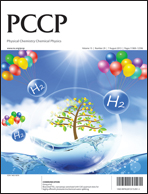The deactivation of 0.5 wt% Pt/Al2O3 and 0.5 wt% Pt–1.5 wt% Sn/Al2O3 catalysts has been studied by operando Raman spectroscopy during the dehydrogenation of propane and subsequent regeneration in air for 10 successive dehydrogenation–regeneration cycles. Furthermore, the reaction feed was altered by using different propane/propene/hydrogen ratios. It was found that the addition of hydrogen to the feed increases the catalyst performance and decreases the formation of coke deposits, as was revealed by thermogravimetrical analysis. The positive effect of hydrogen on the catalyst performance is comparable to the addition of Sn, a promoter element which increases both the propane conversion and propene selectivity. Operando Raman spectroscopy showed that hydrogen altered the nature of the coke deposits formed during propane dehydrogenation. Due to this approach it was possible to perform a systematic deconvolution procedure on the Raman spectra. By analysing the related intensity, band position and bandwidth of the different Raman features, it was determined that smaller graphite crystallites, which have less defects, are formed when the partial pressure of hydrogen in the feed was increased.

You have access to this article
 Please wait while we load your content...
Something went wrong. Try again?
Please wait while we load your content...
Something went wrong. Try again?


 Please wait while we load your content...
Please wait while we load your content...